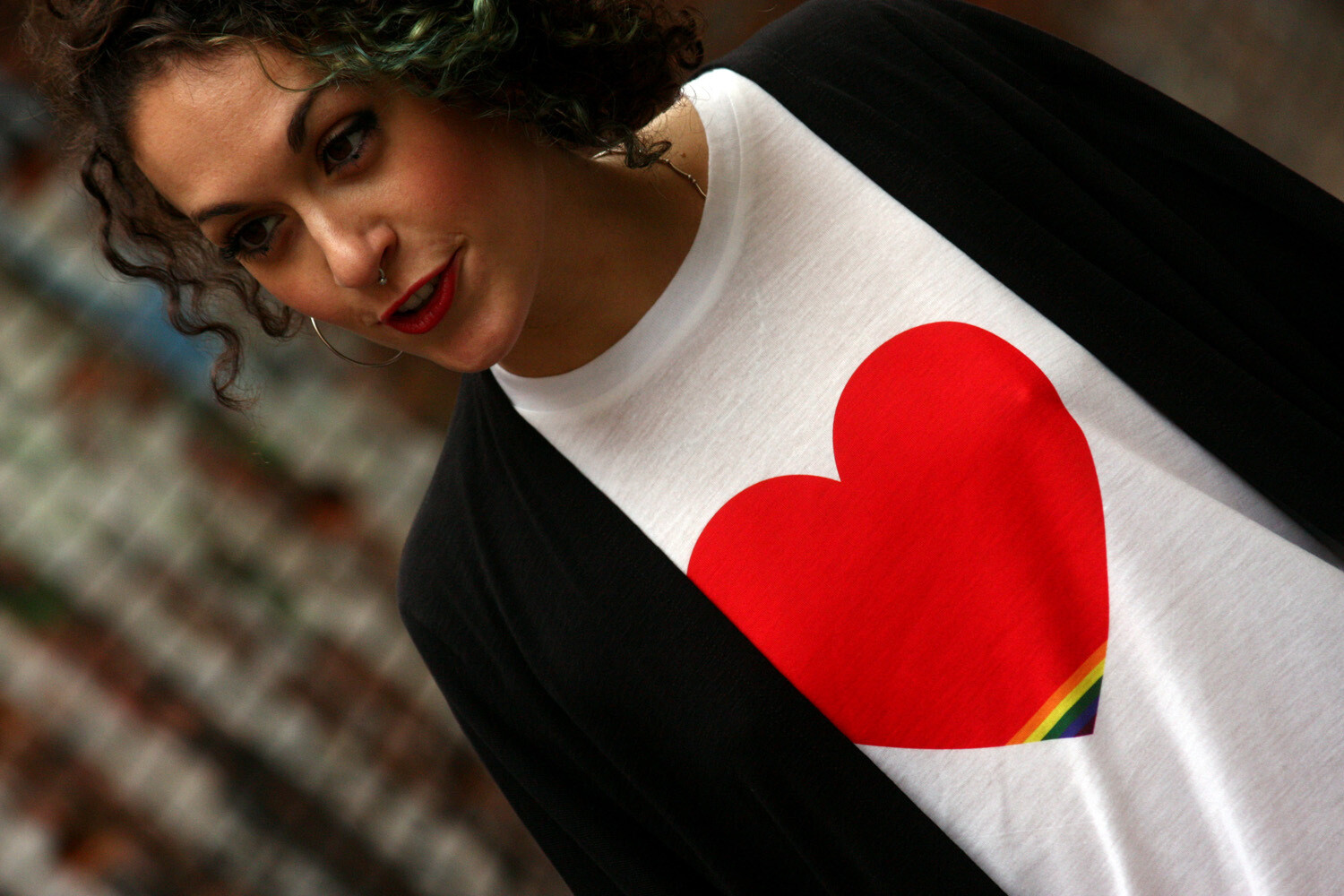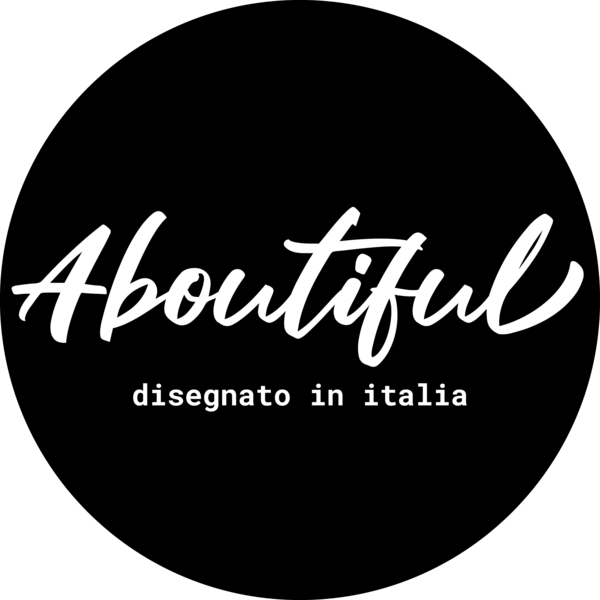

ABOUTIFUL
LEGALIZE BEAUTY (LGBT)
"What are you wearing for others?"
Rainbow Heart
ENG/ITA
RAINBOW HEART
The graphic is the result of combining the heart shape and stripes of the Rainbow flag adopted in 1979. The ideal heart reference is the heart of the poet Wisława Szymborska's sentence "Listen how hard your heart beats for me" from the poem "Every case" in the 1972 collection of the same name. Original text in Polish: 'Posłuchaj, jak mi prędko bije twoje serce' and English translation 'Listen, how your heart pounds inside me'.
Gilber Baker considered the rainbow flag to be unifying all the various identities because the rainbow is a sign of universal peace for both Western and many non-Western cultures as described in his book Rainbow Warrior: My Life in Colour (2019). In the Old Testament account of the Great Flood, God places the Rainbow as the seal of his covenant with mankind and nature, promising that there will never be another Great Flood. The rainbow has thus become the symbol of Peace between earth and heaven and, by extension, between all men: "I will set my rainbow in the cloud, and it shall serve as a sign of the covenant between me and the earth."(Genesis, 9:13). Among the non-Western cultures that Gilbert likes to mention more than others is the legend of the North American Indians "Kwatkiutl", known for their totem and potlatch ceremony: "There will be a day when the birds will fall from the sky, the animals that inhabit the woods will die, the sea will turn black and the rivers will flow with poison. On that day, men of all races will unite as Rainbow Warriors to fight against the destruction of the Earth.
Rainbow Warrior was also the name of the flagship of the Greenpeace fleet from 1978 to 1985, the year it sank.
The flag is also called the Freedom Flag. Gilbert
Baker assigned a specific meaning to each of the colours as
follows:
- RED - LIFE/LOVE
- ORANGE - HEALING
- YELLOW - SUNLIGHT
- GREEN - NATURE
- BLUE - ARMONY
- VIOLET - SPIRITUALITY
The original rainbow flag was painted by Gilbert Baker who worked at a Paramount flag factory in San Francisco and was a friend of Harvey Milk. The original version had eight stripes and flew for the first time in San Francisco in the Gay Freedom Day Parade on 25 June. Since 1979, the better-known version with six stripes has been used.
PRODUCT FEATURES
Our T-shirt is a classic design that will suit any outfit. It is made from a medium-weight cotton (heavier than the standard weight to avoid transparency and guarantee softness) with double stitching at the bottom hem and on the sleeves to give it extra strength, making it the perfect everyday garment.
- Weight: 153 g/m2 (4.5 oz/y2)
- Pre-washed for durability
- Classic fit
- Tubular construction
- Shoulder-to-shoulder tape
- Quarter-turn to avoid creases in the middle
100% of our fabric offcuts are recycled into fibre and used in new products.
33% of the energy used to manufacture our products comes from renewable resources.
The white cotton t-shirt requires less water to make than the coloured t-shirt.
Disclaimer: the collar of the t-shirt may be single-stitched or double-stitched.
CERTIFICATIONS
- OEKO-TEX
OEKO-TEX® Standard 100 certification The International Association for Research and Testing in the Field of Textile and Leather Ecology (Oeko-Tex) based in Zurich (Switzerland) was founded in 1992 and tests textiles for harmful substances. - WRAP
Worldwide Responsible Accredited Production (WRAP), formerly Worldwide Responsible Apparel Production is an organisation whose stated aim is the promotion of safe, legal, humane and ethical production worldwide. - SEDEX
Supplier Ethical Data Exchange Sedex is one of the world's leading ethical trade membership organisations, working with companies to improve working conditions in global supply chains. - FAIR LABOR ASSOCIATION
The Fair Labor Association (FLA) is a non-profit collaboration between universities, civil society organisations and businesses. Fair Labor Association (FLA) is a non-profit labour rights organisation.
Machine wash cold, inside out, on a cycle and with a detergent for delicate garments and similar colours. Use chlorine-free bleach only if necessary. Do not use fabric softener.
Dry in a tumble dryer at a low temperature or tumble dry to ensure the garment lasts longer.
If necessary, iron cold and inside out. Do not iron the decoration.
Do not dry clean.
RAINBOW HEART
La grafica è il risultato dell’unione della forma del cuore e delle strisce della bandiera Rainbow adottata nel 1979. Il cuore ideale di riferimento è il cuore della frase della poetessa Wisława Szymborska “Ascolta come mi batte forte il tuo cuore” tratta dalla poesia “Ogni caso”, racchiusa nell'omonima raccolta del 1972. Testo originale in polacco: “Posłuchaj, jak mi prędko bije twoje serce” e traduzione in inglese “Listen, how your heart pounds inside me”.
Gilber Baker riteneva unificante di tutte la varie identità la bandiera arcobaleno perché l’arcobaleno è un segno di pace universale sia per la cultura occidentale che per molte culture extraoccidentali come descritto nel suo libro Rainbow Warrior: My Life in Color (2019). Nel racconto del diluvio universale tratto dall'Antico Testamento, Dio pone l'Arcobaleno come sigillo della sua alleanza con gli uomini e con la natura, promettendo che non ci sarà mai più un altro diluvio universale. L'arcobaleno è diventato così il simbolo della Pace tra terra e cielo e, per estensione, tra tutti gli uomini: "Io pongo il mio arcobaleno nella nuvola, e servirà come di segno del patto fra me e la terra."(Genesi, 9:13). Tra le culture extraoccidentali che Gilbert ama ricordare più di altre c’è la leggenda degli indiani nordamericani "Kwatkiutl", conosciuti per il totem e la cerimonia potlatch: “Ci sarà un giorno in cui gli uccelli cadranno dal cielo, gli animali che popolano i boschi moriranno, il mare diventerà nero e i fiumi scorreranno avvelenati. Quel giorno, uomini di ogni razza si uniranno come guerrieri dell'arcobaleno per lottare contro la distruzione della Terra”.
Rainbow Warrior è stato anche il nome della nave ammiraglia della flotta di Greenpeace dal 1978 al 1985, anno del suo affondamento .
La bandiera è detta anche Freedom Flag. Gilbert Baker assegnò un significato specifico ad ognuno dei colori nel modo seguente:
- RED - LIFE/LOVE
- ORANGE - HEALING
- YELLOW - SUNLIGHT
- GREEN - NATURE
- BLU - ARMONY
- VIOLET - SPIRITUALITY
La bandiera arcobaleno originale fu dipinta da Gilbert Baker che lavorava presso una fabbrica di bandiere della Paramount a San Francisco ed era amico di Harvey Milk. La versione originale aveva otto strisce e sventolò per la prima volta a San Francisco nella marcia del Gay Freedom Day Parade il 25 giugno. Dal 1979 si utilizzò la versione più nota a sei strisce.
CARATTERISTICHE DEL PRODOTTO
La nostra t-shirt è un modello classico adatta a qualsiasi outfit. È realizzata con un cotone di grammatura media (più pesante della grammatura standard per evitare trasparenze garantendo morbidezza) con una doppia cucitura sull'orlo inferiore e sulle maniche che gli conferisce maggiore resistenza in modo da renderla il capo perfetto per tutti i giorni.
- Grammatura: 153 g/m² (4.5 oz/y²)
- Prelavata per una maggiore durata
- Vestibilità classica
- Struttura tubolare
- Fettuccia da spalla a spalla
- Un quarto di giro per evitare pieghe nel mezzo
Il 100% dei nostri ritagli di tessuto viene riciclato in fibra e utilizzato in nuovi prodotti.
Il 33% dell'energia utilizzata per fabbricare i nostri prodotti proviene da risorse rinnovabili.
La t-shirt di cotone bianca richiede meno acqua per essere realizzata rispetto alla t-shirt colorata.
Disclaimer: il colletto della t-shirt potrebbe essere con impunture singole oppure doppie.
CERTIFICAZIONI
- OEKO-TEX
Certificazione OEKO-TEX® Standard 100 The International Association for Research and Testing in the Field of Textile and Leather Ecology (Oeko-Tex) with headquarters in Zürich (Switzerland) was founded in 1992 and verifies the absence of harmful substances in textile products. - WRAP
Worldwide Responsible Accredited Production (WRAP), formerly Worldwide Responsible Apparel Production is an organization whose stated aim is promoting safe, lawful, humane and ethical manufacturing around the world. - SEDEX
Supplier Ethical Data Exchange Sedex is one of the world’s leading ethical trade membership organisations, working with businesses to improve working conditions in global supply chains. - FAIR LABOR ASSOCIATION
The Fair Labor Association (FLA) is a non-profit collaborative effort of universities, civil society organizations, and businesses. Fair Labor Association (in sigla FLA, in italiano: associazione del lavoro equo) è una organizzazione no-profit per i diritti del lavoro.
Lavare in lavatrice a freddo, al rovescio, con un ciclo e un detersivo per capi delicati e con colori simili. Usa candeggina senza cloro, solo se necessario. Non utilizzare l'ammorbidente.
Asciugare in asciugatrice a bassa temperatura o stendere per garantire una maggiore durata del capo.
Se necessario, stirare a freddo e al rovescio. Non stirare la decorazione.
Non lavare a secco.
About Beauty
ENG/ITA
ABOUTIFUL, project notes
"Life's most persistent and urgent question is: What are you doing for others?" (M.L. King)
"What are you wearing for others?" (Aboutiful)
We have developed a project on what we can do to animate positive feelings in others through the garment that allows textual and visual language to express itself best: the t-shirt.
The project is called Aboutiful. We drew inspiration from the Summer of Love, from that summer at the end of the 1960s when freedom was confused with liberation: when rights were still called desires. The season of carefree idealism, when everything seemed possible.
The heart of our project is the 'rainbow heart', which we made by freely interpreting the rainbow flag created by Gilbert Baker in 1978, symbol of the homosexual liberation movement: we expanded the upper red stripe and contracted the lower strips to fit the perimeter of a heart.
The heart is the symbol of courage, of strength which is not just muscular strength because it is tempered by the intelligence of feelings.
The T-shirt is the thing that speaks closest to our skin and its closeness to our heart, to our nakedness, gives it sincerity. T-shirts are public underwear: they reveal what they cover.
The T-shirt is unisex and is a unifying factor. The difference between male and female is blurred.
Generational differences are also reduced: wearing a t-shirt represents the reappropriation of one's youth, of confidence in life and in others. A sort of time machine.
Our t-shirts are words that, together, would like to constitute a language that can be spoken by everyone to express a sensitivity that is independent of one's sexual orientation.
We wanted to play with words because play is the language-generating process, a language lives on the continuous recombination of its words until it becomes a neologism (the name of our project - Aboutiful - is a neologism).
There are words that share the same genetic heritage without our awareness: "listen" is an anagram of "silent". You can also be someone else while remaining yourself. The same applies to relationships between people as to the bonds between chemical elements: hydrogen and oxygen will never become water if they do not meet.
LeGalizeBeauTy, one of our textual short circuits, offers two readings: the first is the literal reading: the word "Legalisation" expresses a request for legal recognition and creates a surprise when placed next to a word that expresses a concept that has never needed to be approved: "Beauty"; the second reading is allowed by the LGBT acronym highlighted by the capitalisation of its letters.
We would like those who wear our tees to be able to express their sexuality or support of others with simplicity and fun, encouraging everyone to do the same.
But "putting yourself in the shoes of" we hope is the firststep towards a higher goal: identification, becoming the other. A gentle activism that leads us to empathy.
Our project starts from the "cure of language" to seek a "cure of thought", it is basically a method that through the recombination of textual and visual elements tries to highlight a reality that is invisible precisely because it is under everyone'seyes as the stolen letter of E.A. Poe.
It is an attempt to unmask words and symbols that are often used without awareness.
The aim is to instil courage (heart) and give love, which is the true creator of beauty, a chance by paraphrasing John Lennon's phrase pronounced during the "Bed-ins" in 1969 ("All we are saying is give peace a chance"): "All we are saying is give love a chance" eplacing the word peace with love.
ABOUTIFUL, note al progetto
“Life’s most persistent and urgent question is: What are you doing for others?” (M.L. King)
“What are you wearing for others?” (Aboutiful)
Abbiamo sviluppato un progetto relativo a ciò che possiamo fare per animare negli altri sentimenti positivi attraverso l’indumento che consente al linguaggio testuale e visivo di esprimersi meglio: la t-shirt.
Il progetto si chiama Aboutiful. Abbiamo tratto ispirazione dalla Summer of Love, da quella estate della fine degli anni ‘60 dove la libertà si confondeva con la liberazione: quando i diritti si chiamavano ancora desideri. La stagione dell’idealismo spensierato, quando tutto sembrava possibile.
Il cuore del nostro progetto è il “cuore rainbow” che abbiamo realizzato interpretando liberamente la bandiera arcobaleno creata da Gilbert Baker nel 1978 simbolo del movimento di liberazione omosessuale: abbiamo espanso la striscia superiore rossa e contratto le strisce inferiori adattandole al perimetro di un cuore.
Il cuore è il simbolo del coraggio, della forza che non è una forza solo muscolare perché è temperata dall’intelligenza dei sentimenti.
La t-shirt è la cosa che parla più vicino alla nostra pelle e la vicinanza al nostro cuore, alla nostra nudità, le conferisce sincerità. La t-shirt è un intimo pubblico: scopre quello che copre.
La t-shirt è unisex ed è fattore unificante. La differenza tra maschile e femminile si attenua.
Anche le differenze generazionali si attenuano: indossare una t-shirt rappresenta la riappropriazione della propria giovinezza, della fiducia nella vita e negli altri. Una specie di macchina del tempo.
Le nostre t-shirts sono parole che, insieme, vorrebbero costituire un linguaggio che possa essere parlato da tutti per esprimere una sensibilità che prescinda dal proprio orientamento sessuale.
Abbiamo voluto giocare con le parole perché il gioco è il processo generatore della lingua, una lingua vive della continua ricombinazione delle sue parole fino al neologismo (il nome del nostro progetto -Aboutiful - è un neologismo).
Ci sono parole che condividono lo stesso patrimonio genetico senza la nostra consapevolezza: “attore” è l’anagramma di “teatro”. Si può essere anche un altro rimanendo se stessi. La stessa cosa vale per le relazioni tra le persone così come per i legami tra gli elementi chimici: idrogeno ed ossigeno non diventeranno mai acqua se non si incontrano.
LeGalizeBeauTy, uno dei nostri cortocircuiti testuali, offre due letture: la prima è la lettura letterale: la parola “Legalizzazione” esprime una richiesta di riconoscimento giuridico e crea una sorpresa messa accanto ad una parola che esprime un concetto che non ha mai avuto bisogno di essere approvato: “Bellezza”; la seconda lettura è permessa dall’acronimo LGBT messo in evidenza dal carattere maiuscolo delle lettere che lo compongono.
Vorremmo che coloro che indosseranno le nostre tees possano esprimere con semplicità e divertimento la propria sessualità o il sostegno dell’altrui incoraggiando tutti a fare altrettanto.
Ma il “mettersi nei panni di” ci auguriamo sia il primo passo per tendere ad un traguardo più alto: l’immedesimazione, il diventare l’altro. Un attivismo gentile che ci porti all’empatia.
Il nostro progetto parte dalla “cura del linguaggio” per cercare una “cura del pensiero”, è fondamentalmente un metodo che attraverso la ricombinazione degli elementi testuali e visuali cerca di mettere inevidenza una realtà che è invisibile proprio perché è sotto gli occhi di tutti come la lettera rubata di E.A.Poe.
E’ un tentativo di smascheramento delle parole e dei simboli spesso utilizzati senza più consapevolezza.
L’obbiettivo è infondere coraggio (cuore) e dare all’amore, che è il vero artefice del bello, una chance parafrasando la frase di John Lennon pronunciata durante il "Bed-ins" del 1969 (“All we are saying is give peace a chance”): “All we are saying is give love a chance» sostituendo la parola peace con love.
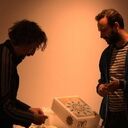

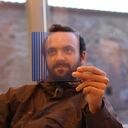

About Us
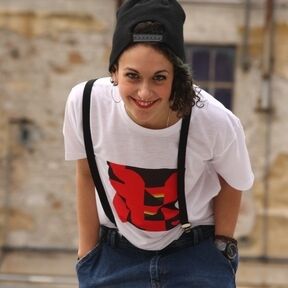
Aboutiful (eng/ita)
Aboutiful (eng)
Aboutiful is a project that comes from afar. The origin is musical: the postpunk of the early 1980s in Italy and the DIY culture. Together with music, the first experimentsin graphic communication were born.
In the early 1980s Massimo Bianchini played drums in a postpunk band, the Diatriba, and worked on the graphics for his own and other bands: demotape covers, t-shirts, posters, etc.
In the first decade of thenew millennium he met Gabriele Bartolucci in Pisa, who was preparinghis thesis at the Academy of Fine Arts in Carrara, and with the New Grass University Association they organised concerts of improvisational music in Pisa (including the first edition of theUninsolent Noise Festival) and the EAS festival.
In 2015, together with other friends, they set up Aboutiful.
Aboutiful (ita)
Aboutiful è un progetto che nasce da lontano. L'origine è musicale: il postpunk dei primissimi anni ottanta in Italia e la cultura DIY. Insieme alla musica nascevano i primi esperimenti di comunicazione grafica.
Nei primi anni ottanata Massimo Bianchini suona la batteria in un gruppo postpunk, i Diatriba, e si occupa della grafica del proprio e di altri gruppi: copertine dei demotapes, t-shirts, locandine, manifesti, ecc.
Nei primi anni dieci del nuovo millennio incontra, a Pisa, Gabriele Bartolucci che stava preparando la tesi all'Accademia di Belle Arti di Carrara e con l'Associazione Universitaria New Grass organizzano a Pisa concerti di musica d'improvvisazione (tra cui la prima edizione di Uninsolent Noise Festival) e la rassegna EAS.
Nel 2015 costituiscono, insieme ad altri amici, Aboutiful.
